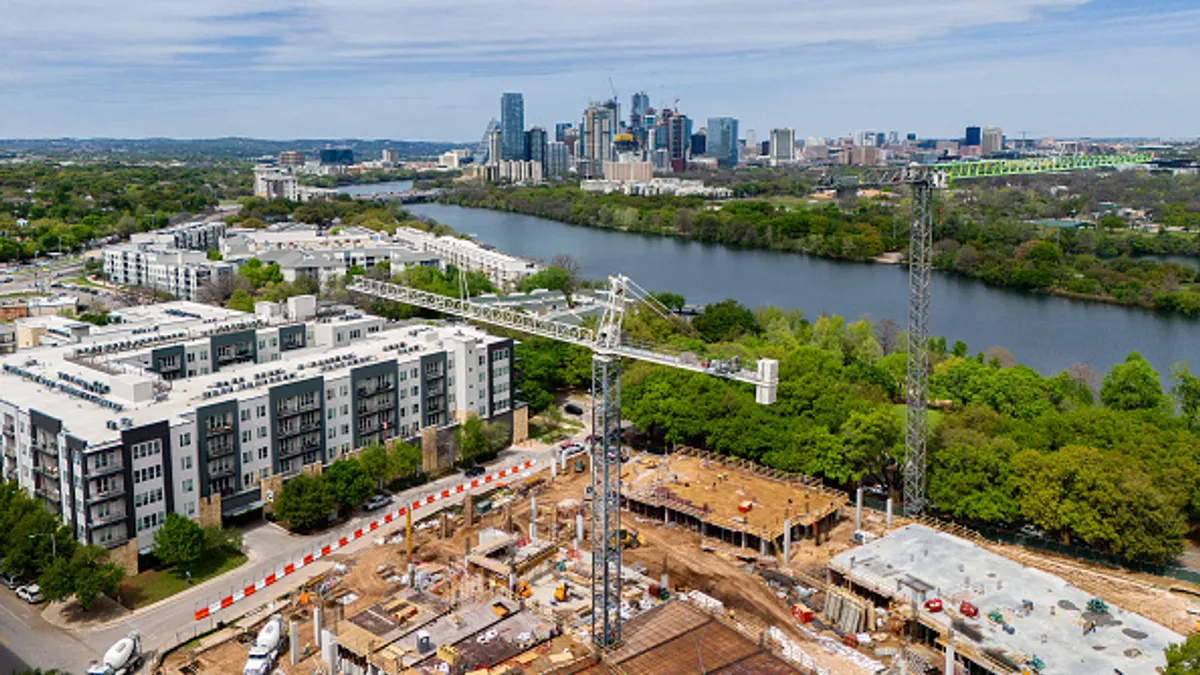This feature is a part of "The Dotted Line" series, which takes an in-depth look at the complex legal landscape of the construction industry. To view the entire series, click here.
Closeout for a general contractor encompasses several tasks, including the gathering of warranties for work and materials; providing to the owner operation manuals, as-built plans and other information necessary for maintenance and repair of the property; completing punch list items and making sure all change orders have been booked and submitted to the owner.
Subcontractors play a major part in this process as they’re the ones typically performing punch work, generating change orders and amassing the assorted paperwork and documents the general contractor will eventually hand over to the owner.
So how can contractors ensure a smoother closeout process? As it turns out, the time to start closing out a job is well before the owner wants to take possession and certainly before the last equipment and finishes are installed.
“The end starts at the beginning,” said Jason Mehlhaff, senior project manager at Layton Construction in Sandy, Utah.
Managing expectations
Closeout is more than just paperwork and punch out, though. It’s important, Mehlhaff said, for the general contractor, subcontractors and other project stakeholders to have the same level of expectations from the outset, not only as it pertains to documentation and organization but to performance as well.
This is especially true for the owner who might have something other than the actual finished product in mind and could be in for disappointment if the reality doesn’t align with what he or she has imagined. “The architect has communicated a vision to the client in what they’ve drawn,” Mehlhaff said.
Layton tries to bridge that potential gap — and avoid disappointment — via good communication early on and then with transparency throughout the project, he said, so clients understand exactly what they’re getting. As part of this effort, it’s also essential that subcontractors and the general contractor be thoroughly familiar with all the job details themselves so that they can communicate correct information about the project.
Final paperwork
Of course, documentation still is a major element of the closeout process. One way general contractors and subcontractors can start early preparations for the administrative aspects of closeout, said Adam Shihadeh, a project manager for Bullseye Builders in Orange County, California, is to amass what they can along the way rather than waiting until the job is near its end. For Bullseye, this means a robust and pointed system of communication with subcontractors.
“Education is the best way,” Shihadeh said. Bullseye uses email to send subcontractors a series of notices, starting with an explanation of how closeout for the project will work and that no retainage — a percentage of the contract amount held back to ensure 100% performance — will be released until they fulfill their obligations to the project.
The takeaway? Start gathering documents sooner rather than later. Otherwise, he said, subcontractors might become concerned with what information they need to provide only when they want their retainage payments, typically near the end of the project.
Read the contract
Contractors and subcontractors can start forming their understanding of expectations with a careful read-through of their contracts. However, Shihadeh said he can “guarantee” that many subcontractors skip this step. Bullseye uses an electronic signature system for its subcontracts, and Shihadeh said it often takes just a few minutes for them to be signed and returned via email, which is typically not enough time for an in-depth review of the documents. When that happens, he said Bullseye contacts the subcontractor and advises them to take another look.
This is all part of the contractor’s mission to plan every aspect of the project, even if subcontractors don’t. “We’re supposed to be the brain of the plan,” Shihadeh said. “It’s on [us] to make sure we have that plan."
Reading the contract is especially important for subcontractors, said attorney Quinn Murphy with Sandberg Phoenix & Von Gontard in St. Louis, when it comes to punch work. Otherwise, he said, some might end up paying for work or repairs of items that weren’t supposed to be part of their contracts in the first place.
“Punch is difficult to define in a contract,” Murphy said. In order not to get stuck paying for things outside the scope of their work, subcontractors should:
- Make sure their scope of work is as specific as possible and included as part of the contract.
- Communicate with the general contractor or construction manager verbally on the job and in writing about any issues that arise dealing with possible interference or damage to their work by other trades.
- Take photographs of put-in-place work immediately upon completion to prove the work was done correctly. This is especially true for finish trades like drywall and painting because oftentimes, Murphy said, they find their work smudged, scuffed or otherwise damaged as other trades complete their own scopes of work.
Making sure punch items are resolved is also important because retainage is often that little piece — or big piece — of leverage used by the owner or general contractor in order to make sure companies return to complete the punch phase. Depending on the project, a typical 5% to 10% retention can even surpass a contractor's estimated profit on the job.
The amount of punch out is also one of those areas, Shihadeh said, that can be reduced by quality control throughout the project. To that end, Bullseye holds two-week look-ahead meetings with subcontractors every week in an effort to help avoid work conflicts between trades and to assess the current state of the job. The aggressive approach, he said, sometimes makes subcontractors feel as if they’re being “hounded” by superintendents, but it’s all part of ensuring that the punch list is kept to a minimum. Their goal is a zero-item punch list, Shihadeh said.
But general contractors are only justified in taking that stern approach when they're starting off with a fair request. “I can't tell you how many subcontractor clients absolutely have a list of general contractors they'll bend over backwards for but also general contractors that have been unfair and asked them to perform work [not within their original scope],” Murphy said. “It gets back to construction being one of the most heavily trust-based professions.”
And when that trust is violated, closeout can become a showdown that sees the subcontractor withholding documentation like warranties and manuals until they receive final payment, and the general contractor insisting on getting that information in their hands before forking over the last check.
“Everybody [in those situations] is worried that the other side is going to renege on their deal the second they finally deliver,” Murphy said. “They do the best they can to make sure everybody walks away at the same time." It could also pay off, Shihadeh said, to take a look back at the end of the project and reevaluate processes and policies that maybe didn’t work as anticipated. Along these same lines, Mehlhaff said, Layton does a "360-degree review" of each project upon completion as well, looking for the great and not-so-great things that happened.
Bullseye even takes the opportunity to share some of that information with the owner as a way to show how proactive the company is when it comes to problem-solving.
“We try to have as much transparency as possible,” he said. “There’s nothing wrong with letting them know how we’re trying to improve our operations.”
The Dotted Line series is brought to you by AIA Contract Documents®, a recognized leader in design and construction contracts. To learn more about their 200+ contracts, and to access free resources, visit their website here. AIA Contract Documents has no influence over Construction Dive's coverage within the articles, and content does not reflect the views or opinions of The American Institute of Architects, AIA Contract Documents or its employees.





















